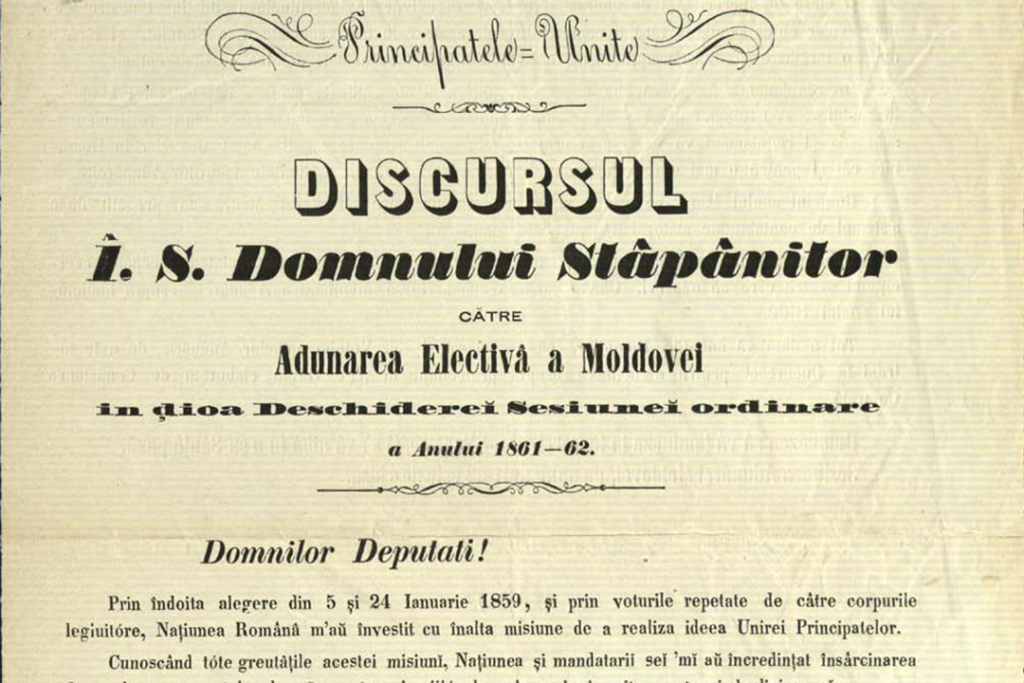The fund of Romanian manuscripts kept at the Academy Library totals almost 6000 volumes and primarily contains texts of old Romanian literature.
From the point of view of antiquity, the manuscripts belong to the period of the 17th-20th centuries, and from the point of view of the content, they represent liturgical, patristic or eschatological books, calendars, letters, star songs or philosophical parables, but also manuscripts of the writers’ works Romanians, classics of our literature, from pre-modern to contemporary.
The oldest Romanian manuscript in the collections of the Library of the Romanian Academy is the Scheian Psaltire, from the second half of the 16th century.

Most of the old Romanian manuscripts are those with religious content. The composition of the collection of Romanian manuscripts includes books of the Old and New Testament (including translations or commentaries on them), liturgical books, books of homiletics, dogmatic literature and of religious polemics, books of canon law (including all legal literature circulated in the Romanian space), patristic literature.
Voronețean Codices, Scheian Psalter, Voronețean Psalter,</em > translations from Slavonic originals of the New and Old Testament texts,dating from the end of the 15th century and the beginning of the 16th century, are the oldest texts in the language Romanian They are present in the Library’s manuscript collection alongside later copies of the Psalteri text, in very large numbers. Next to these are the manuscript of the Psalterii in verses by Metropolitan Dosoftei and the many star songs, extracted from his verses. In the collection of manuscripts, only one complete Bible is preserved, a manuscript dated approximately 1660-1675, the translation of which is attributed to Milescu.
The liturgical books, such as Liturghierul, Molitvenicul, Ceaslovul and Octoihul, are found in dozens of copies, complete or fragmented . Also remarkable is the Slujebnicul Archbishop of Metropolitan Stefan of Ungrovlahia</a >, with text in Slavonic, Romanian and Greek.
Related to the liturgical books, the Psaltiches, i.e. church music manuscripts, are found both as original texts (the first Romanian translation dates from 1713) and in copies based on the Greek psalteries.
Read moreLess
Homiletic literature is brilliantly represented by the Didaches of Antim Ivireanul.
The writings of the holy fathers are also extremely numerous: from Basil the Great, Gregory of Nazianzus, John the Golden Mouth or Cyril of Alexandria to Nichifor Theotokis, they are present in the collection of manuscripts from The Library of the Academy, either with the entire work, or with fragmentary texts, in miscellanies or in volumes of collections, such as Alăuta dhurianceasca, Alfa vita sulesească.
A special category of manuscripts is popular books whose translation into Romanian starts very early. Among them, Floarea Darurilor, a work created in the 13th century by the monk Tommaso Gozzadini, one of the oldest popular books that circulated among Romanians and which illustrates the early contacts between Romanian and European culture. Along with it, the popular novels Alexandria and Varlaam and Ioasaf, as well as Archirie and Anadan, Esopia, Halima, Berloldo, Philerot and Antusa, History of Erotocritos, Eliopic History of Iliodorus , The History of Tarlo and His Friends.
Aprocryphal texts, sometimes included among popular books, are also present in the collection. They appear in our ancient literature since the 16th century, especially in Transylvania and are spread throughout the Romanian area, translated from Greek or Slavic literature.
A category of manuscripts richly represented in the collection of Romanian manuscripts is historical literature, including chronicles, rhyming chronicles, chronographs and historical texts, which circulated in manuscript form. Of particular importance are the 25 volumes donated by D. A. Sturdza to the Academy Library, containing copies of chronicles regarding Moldova and Wallachia, of remarkable value, both due to the rarity of the texts and the notoriety of the copyists in Romanian historiography. To these are added the 22 volumes donated by V. A. Urechia in 1882. Together, the two donations bring together Miron and Nicolae Costin’s Letopisețele, the most complete versions of Ion Neculce’s texts, the works of the mountain chroniclers Radu Popescu and Radu Greceanu.
Worthy of note are the two versions of Neagoe voivode’s Teachings to his son Teodosie, a work rarely found in the Romanian collection of manuscripts and all the more precious.
Important for law and language studies are the rule texts, of canon law, most often miscellanies of ecclesiastical law and secular Byzantine law, present in many copies and variants.
Added to them are the numerous language concerns, embodied in the manuscripts of grammars, glossaries, lexicons and vocabularies.